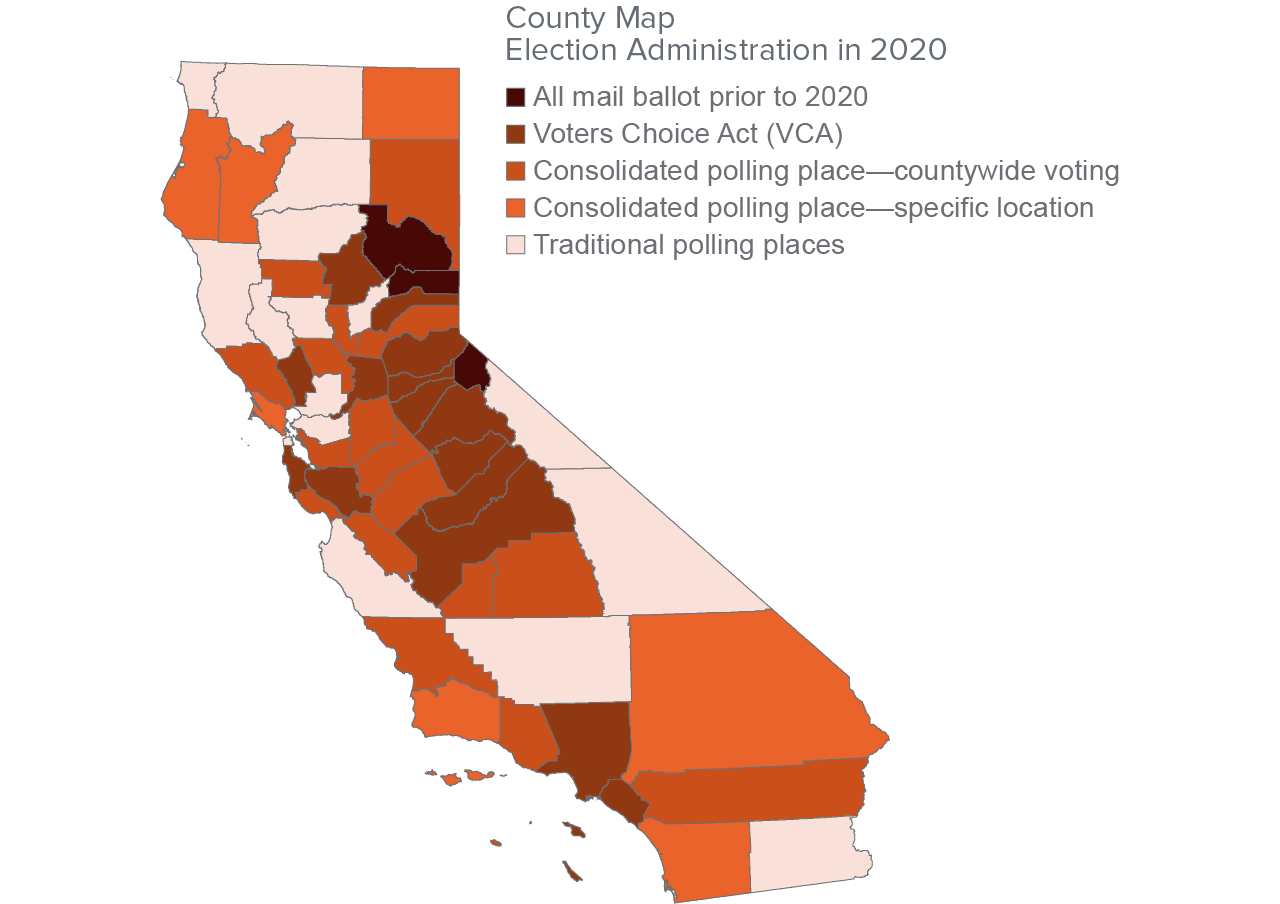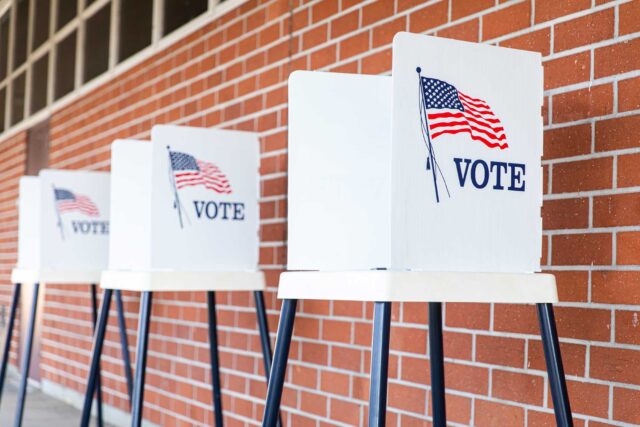Voting rights have become a battleground issue across the United States, as some states push to expand access while others seek to strengthen regulations. California has put forth policies to make voting more flexible and convenient, including universal vote-by-mail (VBM).
With universal VBM, California has made progress toward voting equity. However, other voting reforms meant to address running the 2020 general election during the pandemic proved more problematic—particularly for groups historically underrepresented in elections, such as youth and people of color.
How voting policy affected 2020 turnout and turnout gaps
As COVID-19 cases spiked during a competitive presidential election, California adopted universal VBM: the state mailed every registered voter a ballot that could be cast by mailing it or dropping it off in-person. At the same time, counties could consolidate in-person voting sites, so long as they provided drop boxes and early in-person voting to compensate. Thirty-nine counties consolidated, some giving access only to neighborhood voters and some to any voter in the county.
Universal VBM did improve overall voter turnout in 2020—with modest effects for people of color and young people. But consolidating voting sites may have disrupted voting habits for these same communities, who have traditionally voted in person more often:
- Voting by mail narrowed the gap in turnout between white voters and Black, Latino, and Asian American voters. Between seniors and youth, the turnout gap shrank somewhat more.
- Consolidating in-person voting sites widened turnout gaps for African Americans and Latinos, and often discouraged participation for each group. For voters who originally had registered to vote in-person, gaps were larger than for those who had registered to vote by mail.
- Among Asian Americans, turnout gaps were less affected by consolidation but were still larger for voters who had registered to vote in-person.
- Gaps narrowed slightly for young people who had registered to vote in-person, but often widened among young mail-in registrants.
California’s counties took a range of approaches to in-person voting in 2020

SOURCES: California Secretary of State, November 3, 2020, General Election; Polling location and drop-off location statistics as of October 10, 2020.
NOTES: Consolidated polling places, countywide are counties with consolidated sites for any voter in the county; specific location are counties where voters must use a specific polling place in their community.
Who usually votes in California
The pandemic election changes came after almost a decade of reforms designed to expand access to voting in the Golden State.
California has an “exclusive electorate”: a voting population that does not reflect the demographic makeup of the state. This is notable across racial/ethnic groups. Over half of likely voters are white, but white adults comprise only 41 percent of the adult population; Latinos make up less than a quarter of likely voters but 35 percent of the population. Asian American and African American likely voters are close to their shares of the population.
Age is also a factor. Adults 55 and older constitute nearly half of likely voters and about a third of the population, while young adults (18 to 34) make up about a quarter of likely voters, and about a third of the population.
In part to address these gaps, California has passed reforms that include an online option for voter registration, “pre-registration” for 16- and 17-year-olds, more robust voter registration at the DMV, same-day registration, and a universal VBM system—the Voter’s Choice Act (VCA)—adopted by certain counties.
In many ways, the VCA presaged the changes made for the pandemic. Under the VCA, voters could mail a ballot, drop it off at a drop box or vote center, or show up at a vote center. By 2020, 15 counties had adopted the reform. Its results? Voter turnout was generally higher in the 2018 and 2020 VCA primaries, especially for people who had registered to vote in person. Turnout fell for Latino and Asian American VBM registrants in 2018—but not 2020. For youth, turnout dropped only in the 2020 primary.
Reconsidering voting policy and considering voter outreach
By mailing all registered voters a ballot in 2020, California raised voter turnout in the general election. But changes to in-person voting did not increase turnout and may have even discouraged some voter groups. Policymakers should review the strategies around consolidating in-person options, including those that are part of the VCA.
As election policies evolve, more outreach may help updates reach voter groups. Such outreach is most effective when it comes from trusted messengers, which means election administrators and messengers will need to coordinate efforts, as required in the VCA law.



